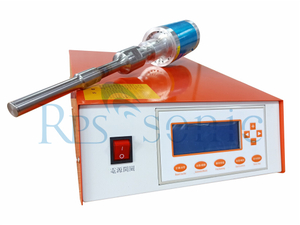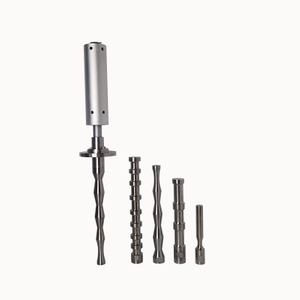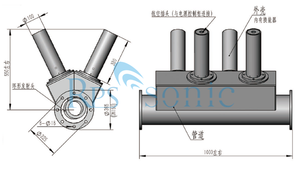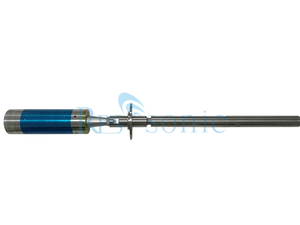Application of Ultrasonic Technology in Sludge Treatment
With the increase of population and the increasing emphasis on environmental protection, sewage treatment plants are increasing rapidly, and the amount of sludge generated is also increasing day by day. The sludge produced by industrial wastewater and domestic wastewater treatment has a moisture content close to 98%, is easy to rot, has a strong odor, and also contains a variety of pollutants. The treatment cost of this kind of sludge is very high. According to the existing treatment technology, it generally accounts for 15%~30% of the total operation cost of sewage treatment plants and 10%~25% of the total investment. As a result, some sewage treatment plants discharge sludge directly, which poses a serious threat to the ecological environment. Therefore, developing new pretreatment technology, improving sludge dewatering rate and promoting subsequent biological treatment become the key to solve the sludge problem. Ultrasonic pretreatment of excess sludge can change sludge properties and improve sludge stability, thus improving sludge dewatering performance, and promoting sludge to absorb nitrogen and phosphorus in order to realize sludge recycling.
1. Ultrasonic can change sludge structure and improve sludge activity.
Ultrasonic can change the structure of sludge flocs, release intracellular substances, and increase the degradability of sludge. Cao Xiuqin and others studied the degree of cell decomposition by ultrasonic. The results showed that the properties of sludge changed after ultrasonic treatment with acoustic energy density of 0.5 W/mL. Sludge flocs were decomposed, intracellular substances were released, and the dissolved chemical oxygen demand (SCOD), N and P in the supernatant of sludge increased significantly. At the same time, intracellular releases were also observed. The quality has good biochemical degradation performance. In addition, the combination of ultrasonic and alkali may further destroy the floc structure of sludge and make the extracellular and extracellular substances of sludge enter the water phase, thus achieving better results than using ultrasonic alone. The effect of ultrasonic on sludge activity is related to the irradiation time of ultrasonic. In the short-term ultrasonic irradiation of sludge, the mechanical shear stress caused by ultrasonic caused slight damage to cells, which resulted in the intrinsic defensive effect of the cells themselves. It showed that the secretion of enzymes increased and the proliferation of cells accelerated, so the metabolic activity of microorganisms increased. The sludge activity reached the maximum after 8 hours of ultrasonic irradiation, and gradually decreased to the control level after 24 hours.
2. Ultrasonic can improve sludge stability
The untreated sludge is very unstable, and changes in physical and chemical aspects will occur during the storage process. Bacteria and algae multiply rapidly, and sludge floats and turns black. High-intensity ultrasonic can kill bacteria in sludge, eliminate viruses, decompose odor-producing substances, thus eliminating the source of odor, killing algae, eliminating suspended solids and improving the solubility of COD. Compared with chemical disinfection, it can not only avoid chemical accumulation effect, but also improve the stability of sludge for a long time, and can effectively prevent the spread of pathogens. Jean (2000) of Taiwan, China, believes that there is a threshold between 0.11 W/mL and 0.33 W/mL, beyond which ultrasonic can decompose bacteria and transform a considerable part of solid COD into dissolved state. J ean found that under 0.33 W/mL acoustic energy density, after 40 minutes of ultrasonic treatment, heterotrophic bacteria and Escherichia coli decreased by 82% and 99%, respectively, and soluble COD increased by 12 times after 1 hour, while under 0.11 W/mL acoustic energy density, the action time was shorter, and the changes of heterotrophic bacteria and Escherichia coli were not significant, only within 1 hour. The soluble COD remained almost unchanged regardless of the duration of action. Chu (2001) in Taiwan, China, found that after 1 hour of ultrasonic energy density of 0.11 W/mL, heterotrophic bacteria and Escherichia coli decreased by 30%, 59%, 40% and 64% respectively, and after 20 minutes, heterotrophic bacteria and Escherichia coli decreased by 56% and 97%, respectively, when acoustic energy density was 0.33 W/mL. At the same time, they also investigated the organic matter released by bacterial decomposition. BOD/COD = 0.66 in the original sludge, and SCOD/TCOD was less than 1%. When the acoustic energy density was 0.11 W/mL, the SCOD increased 40 times after 2 hours of ultrasonic treatment, and the BOD/COD was between 0.66 and 0.8, which indicated that most of the COD released by bacterial decomposition was biodegradable.
3. Ultrasonic can change sludge rheology and improve sludge dewatering performance
Ultrasonic can change the rheology of sludge, and its influence degree is related to the ultrasonic condition. Low acoustic energy density and short time ultrasonic treatment can reduce the specific resistance of sludge and enhance the rheology and dewatering performance of sludge. However, high acoustic energy density and long-term treatment can increase the specific resistance of sludge and make the rheological properties worse . The rheological property of sludge reflects the dewatering performance of sludge. The change of rheological property provides a convenient way to increase the dewatering rate of sludge. The particle size of sludge treated with high strength and short time is about 80 micron. The dewatering performance of sludge is improved and the precipitation is good.
Shorter time of ultrasonic treatment with lower sound intensity (less than 600 W/m2) is beneficial to reducing the bound water content of sludge and promoting sludge dewatering, but the effect of increasing sound intensity and prolonging treatment time becomes worse; the ultrasonic frequency is 20 kHz, the average sound intensity is about 400 W/m2, and the ultrasonic treatment for 2-4 minutes can make the bound water content of sludge contain. The water content decreased from 16.7 g/g dry base to less than 2.0 g/g dry base. Ultrasonic treatment such as Yin Huan greatly reduces the bound water content of sludge, improves the dewatering capacity of sludge, increases the sludge content by 5%~10%, and finally reduces the sludge volume.
Sludge plate-and-frame pressure filtration experiment was carried out by using ultrasonic combined with flocculant to treat sludge. The results show that ultrasonic can reduce the water content of sludge from nearly 98% to 81%, the volume of sludge to the first 1/10, the intensity of ultrasound is 410 W/m2, the treatment condition of ultrasonic for 2.5 minutes is better, and the use of flocculant is from 0.7% dry base. Reduce to 0.6% dry base. Yang Jinmei et al. showed that water content of filter cake decreased by 2.9% after 7 seconds of ultrasonic treatment, viscosity and specific resistance decreased by 29.4% and 24.2% respectively at 10 seconds of ultrasonic treatment, and sludge sedimentation rate after 15 seconds was 3.7 times that of original sludge. The combination of ultrasonic and flocculant could improve sludge dewatering and sedimentation performance and reduce flocculant. More than half.
4. Ultrasonic can promote the increase of nitrogen and phosphorus in sludge, which is conducive to sludge recycling.
Cao Xiuqin and Chen Wangjun of Beijing Institute of Architectural Engineering have shown that with the prolongation of ultrasonic treatment time, the organic nitrogen content in sludge clear liquid increases rapidly. The reason is that the shear force produced by ultrasonic cavitation breaks up cells and releases proteins and amino acids in cells. The content of ammonia nitrogen and nitrate nitrogen increases with the extension of ultrasonic time, which is due to the conversion of part of organic nitrogen into ammonia nitrogen and nitrate nitrogen by ultrasonic cavitation. It was also found that the content of phosphorus compounds and nitrogen in sludge changed similarly under the action of ultrasonic. Increasing nitrogen and phosphorus content is beneficial to sludge recycling. Compared with naturally formed soils, urban soils have lower organic matter content and lower available nutrient content. The sludge treated by ultrasonic can be used to increase the fertility of farmland, forestry and pasture. According to the literature , one year after the sludge was applied to the surface of the soil, the contents of total nitrogen, available nitrogen and total phosphorus in 20 cm of the surface of the soil increased significantly, and the bulk density, water holding capacity and porosity of the soil also improved to a certain extent. If the sewage sludge treated by ultrasonic wave can be used for the improvement of arid, semi-arid, saline-alkali land, mine wasteland or desert area, it will be a measure to protect the ecology and benefit the contemporary era.
5. Conclusion
Using ultrasonic technology to treat sludge is conducive to sludge reduction, harmlessness and resource utilization, and has great social, environmental and economic significance. Low-frequency and low-dose ultrasonic treatment of sludge can enhance the activity of sludge, change the structure of sludge flocs, release bound water from sludge microbial micelles, and improve the dewatering performance of sludge; high-intensity ultrasonic can kill bacteria in sludge, eliminate viruses and improve the solubility of COD. At present, the domestic and foreign research on ultrasonic sludge reduction mainly lies in the influence of ultrasonic conditions on promoting anaerobic and aerobic sludge reduction, and the influence of ultrasonic on the physical, chemical and biological properties of sludge.

 English
English








